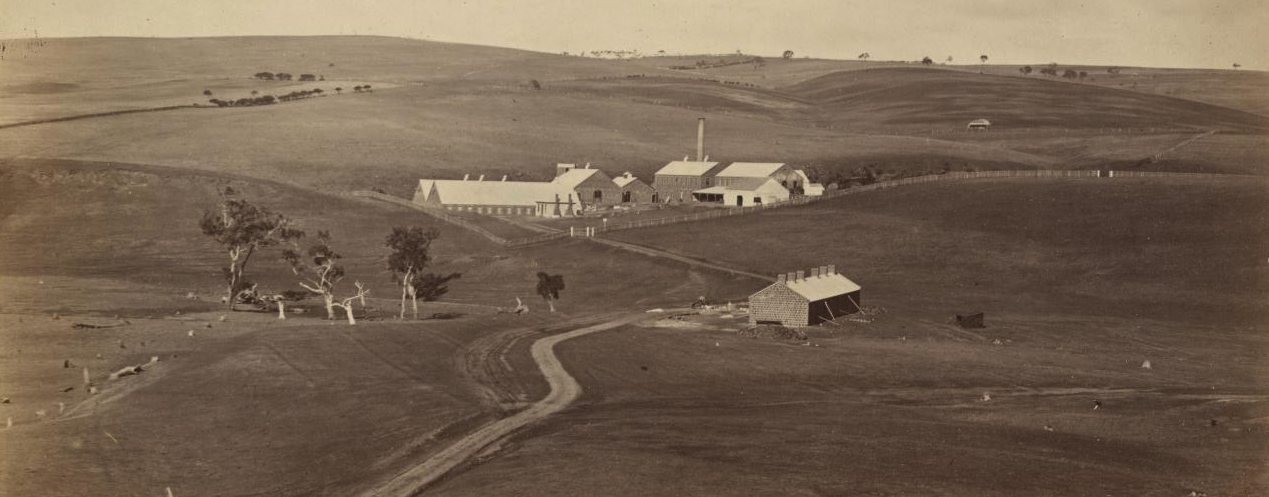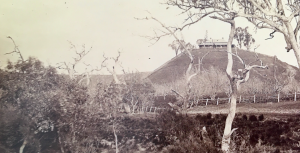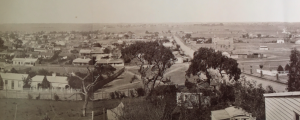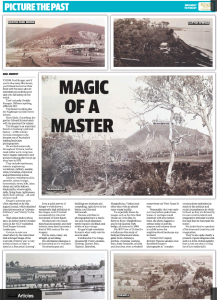
Paper mill, Fyansford, ca 1876.
Think Fred Kruger and if you’re like many film-lovers you’ll think the horror-flick fiend with his razor-gloved depredations awaiting poor saps who fall asleep on his watch.
That’s actually Freddie Krueger. Different spelling, different MO. This bloke’s nothing like the Nightmare on Elm Street demon. More likely, if anything, the gentler Edward Scissorhands with his penchant for topiary.
This Kruger is an important fixture in Geelong’s pictorial history. A 19th century German immigrant who became one of Australia’s leading landscape photographers.
He worked extensively throughout Victoria but his most stellar work comprises many images captured in and around Geelong after he set up shop here in 1879.
These include boathouses, schools, engineering workshops, military, seaside, cities, townships, shipwreck and architectural scenes. Likewise, melodrama skits, sawmills, mines, bridges, homesteads, rivers, hills, lakes, sheep and cattle stations, blacksmiths, wheelwrights, mills, flying foxes, lighthouses, idyllic bush settings … all sorts of clever stuff.
Kruger’s activities were often reported on by this august journal, which attached descriptions such as “extreme brilliancy’’ and “clarity” to his work. High praise back in those days, as author Isobel Crombie notes in her NGV-published Fred Kruger Intimate Landscapes.


Left: Corio Bay rowing houses. Right: Murgheboluc.
Curious to note one observation by the Advertiser that a Kruger image of the Convent of Mercy was “a very artistic picture, as clear in detail as a fine pencil drawing”.
Even a quick survey of Kruger’s work shows a remarkably high definition to his images, even if marred occasionally by a blurred movement of some figure. His shots are very much historical documents and their intrinsic deep detail presents a kind of 19th century Blu-ray imagery.
Fact is, some, many, are straight-up arresting. His Aboriginal catalogue is as fascinating as it is evocative. His streetscapes and buildings are intricate and compelling, right down to the bricks, roof tiles and lattice-work. Human activities he photographs have a reach-out-and-touch sharpness to them rarely found in old black and whites of any vintage.
Kruger’s high-resolution format is what really sets his oeuvre apart. It imbues his You Yangs, Queenscliff, Point Lonsdale, Geelong, Queens Park, Highton, Batesford, Murgheboluc, Viaduct and other sites with an almost razor-sharp lucidity.


Left: View of Chilwell. Right: Queens Park bridge.
I’m especially drawn by images such as his New Boat House on Corio Bay, by Barwon River, Murgheboluc, and by his Queens Park bridge, all pictured in 1880.
His 1879 View of Chilwell is a draftsman-like study of backyard fences and sheds, gable roofs, chimneys, porches, verandahs, washing lines, dusty footpaths, schools and churches, even a windmill somewhere out West Fyans Street way.
Presumably shot very early morning before pedestrians, horses or carriages could interrupt with any motion blurs, the photo suggests a serious sense of activity, purpose and industry about to unfold across his neighbourhood landscape any moment.
Geelong Advertiser, 2 January 2023.
Former NGV deputy director Frances Lindsay once described Kruger’s photographs as “complex constructions embedded as much in the political and social circumstances in which he lived, as they are formed by his own creative talents and imaginative attitudes towards the land that he had made his home”.
No doubt they’re a product of his times and creativity and imagination. They’re also quite clearly a product of great diligence and skill in a form of photography that is now just one in a long list of lost media skills.
This story appeared in the Geelong Advertiser of 2 January 2023.



